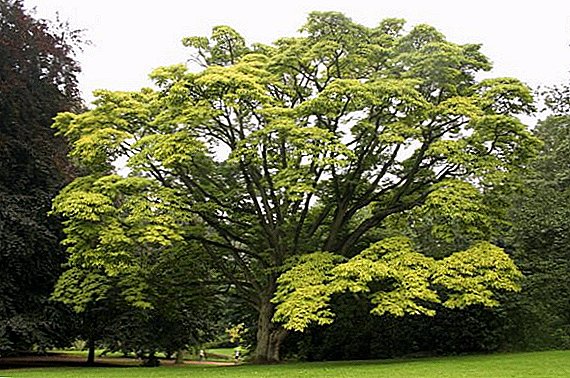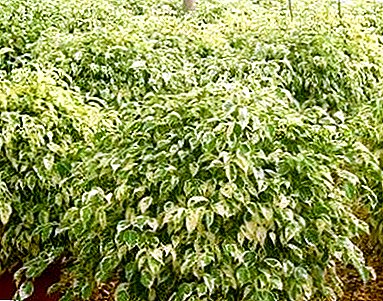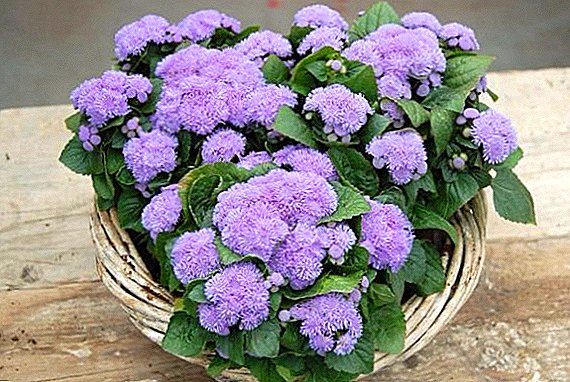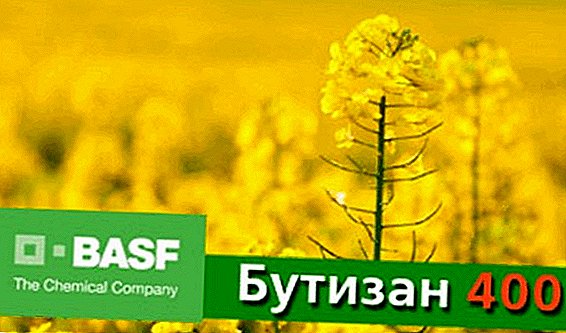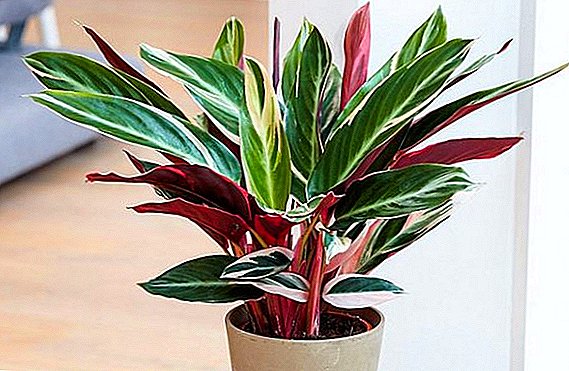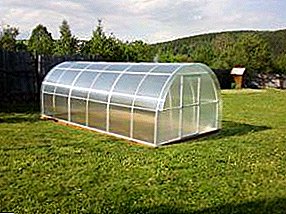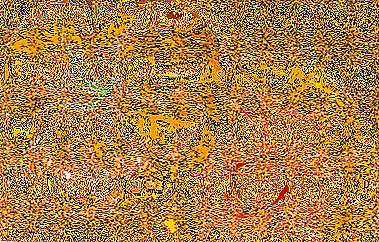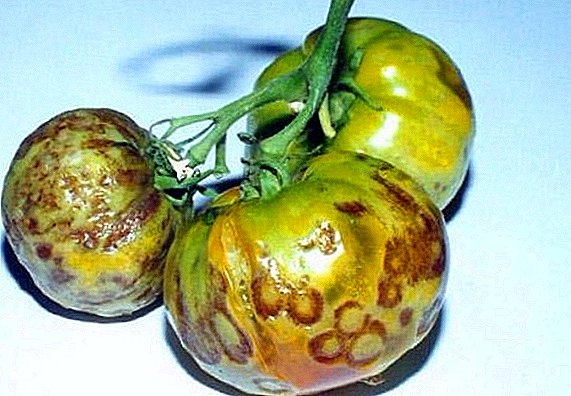 There are a lot of diseases in tomatoes. Knowledge of them will be useful to all who grow tomatoes in order to get a tasty, healthy, and generous harvest. Today we look at the most common diseases of tomatoes that you may encounter.
There are a lot of diseases in tomatoes. Knowledge of them will be useful to all who grow tomatoes in order to get a tasty, healthy, and generous harvest. Today we look at the most common diseases of tomatoes that you may encounter.
Bacterial diseases of tomatoes: symptoms, control methods
The causes of bacterial diseases in tomatoes are various bacterioses, leading to the death of plants, to a decrease in their fruitfulness and the quality of tomato fruits. The defeat of tomatoes by bacteria is much less common than viruses and fungi.
Bacterial mottling
The disease strikes the leaves, much less often the fruits and the stems, and easily stands out among other diseases of tomatoes visually. At first, the leaves become covered with oily spots, with time becoming dark brown. The diameter of these spots is about 2-3 mm. As a result, the leaves collapse and die. A satisfactory environment for the development of bacterial mottling is low temperature and high humidity. Disease fungi can be stored on the seeds and on the roots of the accompanying weeds, they can only be in the soil for a short time in the soil. This disease is quite rare, with its manifestation it is necessary to treat plants with copper-containing fungicides and Fitolavin-300. 
Bacterial cancer
This is a very harmful bacterial disease that combats the entire plant. Leaves fade first. On the petioles are visible hotbed of bacteria - brown growths. On the cut stem, the empty yellow core is well visible. Fruits spoil both outside and inside. White spots are formed on the outside of the tomato fruits, and inside the bacterium the seeds are affected: they are either underdeveloped or will have poor germination. This infection persists on seeds, in the soil and on plant residues if tomatoes are grown as monoculture. To prevent your tomatoes from overcoming such a disease as bacterial cancer, seeds are soaked in TMTD suspension on the day of planting, and during the growing season, plants are sprayed with copper-containing fungicides. 
Important! Processing with such preparations is done only in dry and warm weather, so that the bushes of tomatoes are dry.
Bacterial wilt
If the bushes of your tomatoes begin to wilt, then this is the first external sign of the manifestation of bacterial wilt. Signs of wilting can appear even overnight, everything proceeds very rapidly, and the lack of moisture is not a question in such cases. If you look at the dead plant in detail, you can note the presence of fluid inside the stem and emptiness, and the internal tissues of the stem become brown. This disease is almost impossible to cure. The affected plants will have to be destroyed, and all other plants, still without signs of disease, are recommended to water with a 0.6-1% solution of Fitolavin-300 (at least 200 ml under each plant) in order to delay the infection of healthy bushes. 
Root cancer
One of the rare diseases of tomatoes. Plant roots are covered with small growths, and bacteria are concentrated inside them. The disease is identified by indicator plants (eg, pea seedlings, kalanchoe). From the minute when the infection has penetrated into the body of the plant, and until the first signs appear, approximately 10-12 days pass. The main breeding ground for the disease are affected plants and soil. To avoid tomato root cancer, you should try to injure the roots of tomatoes as little as possible, because the causative agent of the disease can only leak through fresh wounds. One of the methods of dealing with root cancer is the steaming of the soil, as the pathogen dies during steaming. Soaking the roots of seedlings of tomatoes in a solution of Fitosporin-M (2-3.2 g per 1 liter of water) will also be effective. 
Wet Fruit Rot
Wet rot is practically harmless to the greenhouse fruits of tomatoes and is rarely found in practice, but it causes significant damage to tomatoes in open ground. Fruits can catch this disease if there are minor, minor damage. Sick fruits soften, turn brown, and after a few days they completely rot, and only the skin remains of the fruit. Bacteria of this disease develop well at high humidity, temperature drops and temperature + 30ºС. The infection is spread by insects from other infected plants. 
Important!Resistant to wet rot are those varieties and hybrids of tomatoes, which are generative growth gene.
The main method of dealing with wet rot in the field is the destruction of insect vectors.
Necrosis of the stem core
Bacterial disease, quite serious. The first to suffer from necrosis are the stems of well-developed plants during the formation of the first brushes with fruits. The stems are covered with brown spots, cracking after a while, the leaves wither, and the plant dies, while the fruits do not have time to ripen. The primary source of this infection is infected seeds, as well as soil and infected plants. The maximum temperature for pathogen growth is a temperature of 26–28ºС, and at 41ºС the bacteria die. Bushes infected with necrosis should be torn out (better burned), and the soil should be treated with a 0.2% solution of Fitolavin-300. 
Black bacterial spotting
This disease can destroy up to 50% of the crop, and the remaining fruits lose their presentation and properties. Plants that become ill with such bacteria are seemingly underdeveloped and weakened. Spots are based on all organs of tomatoes, except the roots. The spots become black with time, and the disease progresses even more. Low temperatures are not dangerous for these bacteria, but they die at + 56ºС. The infection is transmitted by infected seeds and plant debris. It is imperative to pickle the seeds, because the bacteria on the seeds can live for one and a half years. Etched seeds Fitolavin-300. It is also recommended that plants are treated (three to four weeks after germination, with a frequency of 10-14 days) with a 1% Bordeaux mixture and cartocide. 
Interesting! In France, in the 14th century, tomatoes were called "apples of love", in Germany, "apples of paradise", and in England they were considered poisonous.
Tomato viral diseases: symptoms and control
Tomato viral diseases are caused by various pathogens (viruses) and are dangerous both for the plants themselves and for the future harvest.
Aspermia (seedless)
Visually, aspermia can be determined by the high bushiness of the plant, by the underdeveloped generative organs and by the weak stem. Flowers of tomatoes grow together, leaves become small and change color. Aspermia is transmitted by insects or through reserve plants. It affects solanaceous crops, asrovye and others. To prevent aspermia from spreading, it is necessary to remove the reserve plants and poison the insect vectors. 
Bronze
The virus of bronze becomes more and more harmful with each passing year, the whole crop can die from it. Plants in film greenhouses and in the open field are the worst off. Bronze is determined on the tomatoes by ring patterns on young fruits, which are gradually turning brown. In the future, the same spots are visible on the leaves of tomatoes. Also, periodically may die off the tops. The disease is spread by thrips or by mechanical means. This virus is not treated, but it is inactivated at a temperature of + 45ºС. Decisive methods of dealing with bronze - the destruction of thrips and the removal of weeds. 
Yellow Curly
Carriers for this disease - whiteflies. Those plants that are affected by the disease at the beginning of the growing season are short in appearance, chlorotic, deformed and small leaves, and the plants are unevenly colored. On severely affected plants usually not tied fruit. With regard to methods of control, it is best to plant resistant varieties of tomatoes, destroy weeds, process plants with mineral oil in order to reduce the spread of the disease. 
Bushy top
This virus is potentially dangerous and is transmitted through seed, aphids and mechanically. Its initial symptoms begin to appear even in winter. First of all, white dots form on the leaves, and then they begin to acquire a dark brown color and cause necrosis. Sheet plates are wrapped down and pulled out. The lower leaves of the plants after some time twist from the stem at an acute angle. The spindle-shaped plants affected by this virus are stunted, the leaf veins begin to turn blue, and the leaf itself becomes coarse. The virus dies at a temperature of + 75ºС. Chemical and biological agents to protect against bushiness of the top yet. Only conducted agromechanical processing. It is recommended to do culling of sick seedlings in the early stages, and diseased plants - during the growing season. 
Mosaic
Mosaic is one of the viral, rather unpleasant, diseases that mainly affect tomatoes grown in open ground. About 10-14% of the crop dies from the mosaic. Lthe roots of tomatoes that are sick become covered with a variegated (mosaic) color, with dark and light green areas alternating with them. On fruits, yellow blotch can sometimes develop. The first source of this infection are infected seeds. Therefore, as a preventive measure, it is best to pickle the seeds before planting, but if the tomatoes are still sick of this infection, then simply remove them. 
Leaf filament
The causative agent of this disease leads to the deformation of plants and the drying of the tops. The crop, when infected with a virus, dies almost completely. Diseased leaves are filiform and ferns. The disease spreads through reserve plants, which are very numerous, and with the help of aphids. As for protection measures, they are mainly agrotechnical. 
Did you know? 93% of home gardens in America are tomatoes. This is the most popular vegetable there.
Fungal diseases of tomatoes: symptoms, control methods
Fungal diseases of tomatoes - the most common. Their main feature is that they can affect absolutely any part of the tomatoes and almost never cure.
Alternaria
Alternaria is a fungal disease that affects the stems, leaves and less often the fruits of tomatoes. Initially, the disease is amenable to the lower leaves, which are covered with large round brown spots with concentric zonality. These spots gradually increase, and the leaves of tomatoes dry out. The stems are covered with dark brown oval large spots with the same zonality, which lead to dry rot or the death of the stem. Fruits, often near the stem, form slightly indented dark spots, and if there is an excess of moisture on these spots, dark velvety fungus sporites appear. 
This disease is stimulated by high temperatures (25-30 ° C). For the purpose of prevention, at the first manifestations of the disease on tomatoes, it is necessary to treat them with antifungal copper-containing agents. (Skor, Ridomil Gold, and others); if the disease has appeared, when the fruits are already hanging, it is desirable to treat with biopreparations.
Anthracnose
Anthracnosis in tomatoes is of two types - fruit and leaf. Its harmfulness will be determined by the conditions of growth. The disease is widely distributed in film greenhouses, and no less in open ground. Anthracnose tomato leaves most often ill adult plants. At first, the upper leaves wither, the central stem is exposed, the roots macerate, and the plant easily breaks out of the ground. The affected parts of the plant are covered with small black sclerotia.
 As for the anthracnose of fruits, the fruits are covered with depressed dark spots, and, as a result, there may even be mummification of the fruits. For the prevention of anthracnose, it is recommended to treat the seeds with Agat-25, and during the growing season the plants are sprayed with Quadris and Strobe; drugs based on hay bacillus are also very effective.
As for the anthracnose of fruits, the fruits are covered with depressed dark spots, and, as a result, there may even be mummification of the fruits. For the prevention of anthracnose, it is recommended to treat the seeds with Agat-25, and during the growing season the plants are sprayed with Quadris and Strobe; drugs based on hay bacillus are also very effective.
White spot (septoriosis)
About half of the crop can die from septoria. In most cases, old leaves are affected, located on the ground. Different stains form on them, they turn brown, deform and dry. Best of all, white spotting develops at temperatures from + 15ºС to + 27ºС and air humidity from 77%. The fungus is stored in plant debris. Fight against septoria can be done by removing plant residues, spraying infected plants with fungicides, maintaining crop rotation and spatial isolation between tomatoes and other solanaceous crops. 
White rot
Often white rot on tomatoes is observed during storage. Fruits are covered with wet putrid spots. Almost always, this disease occurs in places where tomatoes have been mechanically damaged. Actually, white rot develops best in ruptures of fetal tissues. Soil and compost are the primary sources of infection. That is why for the prevention of their just steaming. The main source of infection is sclerotium in the soil, and in order to protect the tomatoes from white rot, it is necessary to disinfect it after a previous crop. 
Brown spotting (cladosporiosis)
Increasingly, varieties of tomatoes and their hybrids, which are more resistant to cladosporia, are growing, and the harm from it is decreasing. On the lower leaves of plants that are unstable to this disease, orange spots appear, darkening with time. After some time, a dark patina forms on these spots. Brown spotting can be stored in greenhouses for up to ten years. Impeccable conditions for this are high temperature and humidity. The best way to combat brown spot - the use of resistant varieties of tomatoes (for example, Yvon, Kunero, Raisa and others). And when an infection occurs, the plants are sprayed with Abiga-Pik, Poliram and HOM. 
Verticillosis
Today verticillosis does not cause major damage. The initial signs of the disease can be seen on old leaves - the appearance of chlorosis and necrosis on them. Also, the root system is gradually rejected. Since the disease is twofold, for one half of pathogens the ideal temperature is lower than + 25ºС, and for the other - higher. Verticillus fungi can be stored in plant residues and soil. The main methods of preventing the disease: tearing out plant residues and growing resistant varieties of tomatoes and hybrids, because there are no fungicides to combat verticillus. 
Root rot
Root rot is possible in the open field on the planting sites of tomatoes that are overmoistened, and in greenhouses, growing tomatoes on the substrate. Losses are relatively few. Signs of root rot - blackening near the root neck and root (black leg). Following this, the plant fades. The best circumstances for the spread of the disease - non-sterile soil and excessive watering. This proves that the source of the disease is the soil and the substrate, sometimes the fungus remains on the seeds. The best method of dealing with root rot is disinfecting the substrate, soil, seedlings and seed dressing. 
Important! A very effective way - to loosen the soil and sprinkle the surface of the earth with seedlings of large river sand.
Mealy dew
Powdery mildew does the most harm in glass greenhouses, but recently its prevalence has been decreasing. But if your tomatoes are still infected with this disease, the yield losses can be huge. Powdery mildew in tomatoes is determined as follows: white patches are created on the leaf plates, petioles and stems are rarely modified. Favorable conditions - low temperature and humidity, insufficient watering. To escape the fungus, the plants are sprayed with a solution of fungicides. (Strobe, Kvadris, Topaz and others). Sodium HUMATE 0.01 and 0.1% kills the fungus completely. 
Gray rot
A very dangerous fungal disease of tomatoes, which kills half of the crop, and even more. The fungus gradually overcomes the entire stem, tissue necrosis develops. The plant becomes visible whitish-grayish bloom, and it steadily fade. An excess of air humidity also affects generative organs. The infection is transmitted to tomatoes and from other crops (for example, cucumbers). As for the varieties of tomatoes or their hybrids that are resistant to this disease, they have not yet been bred. It is necessary to apply agrotechnical measures, growth regulators and chemical methods of protection (Bayleton, Euparin Multi) in time. 
Cancer stems
The disease does different damage to tomatoes, it all depends on the place of their growth. In glass constructions, the cancer of the stems practically does not spread, and in greenhouses film - the whole plant dies from it. In open ground ascochito is very rare. Ascohitosis affects tomato stems, and sometimes leaves. Brown depressed spots form on the stems, and gum oozes from them. The flowers are underdeveloped, the fruits may be covered with the same spots. The disease can persist on seeds and plant residues. Impeccable conditions for the development of askohitosis - wet and cold weather, low temperature. Infection control methods include disinfecting the soil, adding Trichodermina to it, spraying plants with growth regulators (Immunocytophyte, Agat-25), and treatment of spots with a special paste from chalk and Rovral. 
Fusarium wilt (Fusarium)
Fusarium causes damage to tomatoes. First, chlorosis of the lower leaves occurs, and then all the others. Tomato shoots wilt, petioles and leaf plate deform. Those conditions that are not comfortable for plants are simply ideal for the development of such an infection. Tomato plants can intercept this disease from seeds, soil, and post-harvest residues. To prevent the development of fusarium wilt, resistant varieties of tomatoes are planted. (Rhapsody, Raisa, Sore, Monica, and others), before planting, the plants are watered with Pseudo-bacterin-2 (for one plant - 100 ml of the preparation). Benzimidazole preparations are also used. 
Late blight
This disease has a low degree of danger. Initially, the root neck is deformed and turns black, therefore, the plant begins to rot. Then the disease rises along the stem, and it is covered with white bloom of mycelium. Dark spots can also form on the fruits of tomatoes, and diseased fruits simply fall off. For the purpose of prevention, sterilize the soil and remove the infected parts of the plant. Also for processing when planting tomatoes use Pseudobacterin-2, and after planting - 0.01% solution of sodium humate. 
Interesting! 94.5% of tomato weight is water.
Noncommunicable diseases of tomatoes: symptoms and control
To non-infectious diseases of tomatoes can lead to adverse weather conditions and violation of the growing mode.
Vertex fruit rot
The disease can occur due to genetic and agrotechnological factors. Green fruits are covered with white or brown spots. Sometimes necrosis affects a third of the fruit of a tomato, and then the spots turn black. Peak rot in most cases is characteristic of large fruits of tomatoes, and its appearance is possible due to the lack of calcium ions, due to the characteristic concentration of the soil solution, when pH is less than 6, at elevated temperature, etc. 
To prevent the appearance of vertex rot, be sure to water the plants in time so that the soil does not overdry or rot, use foliar fertilizers with special preparations, before planting use fertilizers that contain calcium. You can also plant resistant varieties and hybrids.
Hollow Fruit
A disease from which there is no seed in the fruit. This is possible when fruit sticking is broken, or due to other factors (temperature drops, lack of pollinators, lack of nutrients, especially potassium, and others). For the purpose of prophylaxis, it is necessary to create favorable conditions for dusting flowers (humidity, temperature, nutrition, lighting) in order to ripen a sufficient number of seeds. 
Stolbur
This is a phytoplasmic disease of tomatoes. It is characteristic for plants in open ground, and in greenhouses it is practically absent. The main problem is the lack of seeds in infected plants. The main symptoms of stolbur are compacted and brown root bark, compacted fruits, reduced leaves, the plant completely mutates. Stolbur develops during hot and dry weather. The main carriers of the disease are cicadas. Virtually the only way to fight stolbur today is to destroy the tsikadok, carriers of the disease.
 In the cultivation of tomatoes there is nothing unbearable, you just have to perform preventive actions against diseases and treat diseased plants in time.
In the cultivation of tomatoes there is nothing unbearable, you just have to perform preventive actions against diseases and treat diseased plants in time.
Did you know? Today there are 10,000 species of tomatoes. The largest tomato weighs almost 1.5 kg, and the smallest has two centimeters in diameter.


